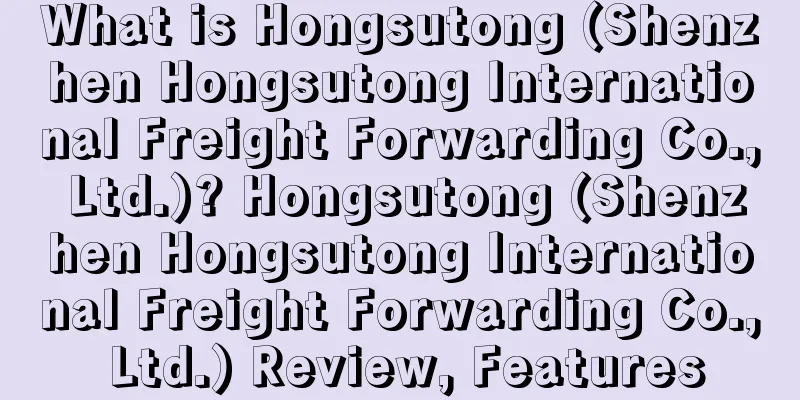Fines imposed! Canada officially begins implementing eManifest reporting

|
Fines imposed! Canada officially begins implementing eManifest reporting
According to the information released by CBSA (Canada Border Services Agency), the six-month transition period of the new regulations has expired, and the declaration of the new eManifest will be enforced from July 4. If the goods are not declared in time 24 hours before loading, a fine will be imposed.
Prior to this, the import goods system used by CBSA (Canada Border Services Agency) was ACI (Advance Commercial Information), which is similar to the Canadian version of the AMS manifest system. All goods imported into or transiting Canada must be declared with ACI.
The new eManifest is an upgraded version of the ACI system. Shipowners need to declare the M bill eManifest, and freight forwarders need to declare the H bill eManifest, and each layer of the H bill needs to be declared. In general, the biggest difference between eManifest and ACI is that the ACI system only needs to be declared once, while eManifest needs to be declared layer by layer. If there is a set of bills, then each bill needs to be declared.
In addition, the CBSA (Canada Border Services Agency) has clearly stated in its regulations that it will conduct a series of strict inspections on Canadian imports, and that freight forwarders at all levels must submit eHBL information data on their own, and will no longer accept declarations from logistics companies.
The new eManifest regulations require that ships enter information at the port of departure before sailing. Freight forwarders and ship owners need to submit corresponding customs clearance documents to the customs, and the ship will only be released after the information is confirmed to be consistent.
The editor would like to kindly remind everyone that since the new regulations have a 6-month trial period, the CBSA (Canada Border Services Agency) did not impose a fine on illegal goods before July 4 (0 fine), but the goods must be re-declared correctly before customs clearance. After six months, cargo owners who fail to declare correctly in time will be fined.
So, when should the eManifest information be submitted? Generally speaking, sea freight needs to be sent 24 hours before loading; air freight needs to be sent 4 hours before arrival, and if it is a short-distance flight, it needs to be sent before take-off; rail freight needs to be sent 2 hours before arrival, and road freight needs to be sent 1 hour before arrival.
Regardless of whether the eManifest information is sent late or missed , the CBSA (Canada Border Services Agency) will impose a fine through the AMPS (Administrative Monetary Penalty System), and the amount of the fine may reach several thousand dollars. Canada logistics fine |
>>: Attention Japanese sellers! Tokyo area will enter the fourth state of emergency
Recommend
What is 18 Logistics Network? 18 Logistics Network Review, Features
18 Logistics Network was established in 2011 and ...
What is Pitchbox? Pitchbox Review, Features
Pitchbox is a discovery and relationship building ...
What is SellerX? SellerX Review, Features
SellerX is a German, venture-backed startup with a...
The unstoppable spiral: TOP1 launched 0 yuan purchase, and the sellers lost millions and left the market
This has been a year of ecological disorder in th...
What is Theory? Theory Review, Features
Theory is committed to becoming a modern enterpri...
With an average annual consumption of £500 per person, the pet economy in the UK is booming
Compared with the domestic pet economy, which is ...
What is 4psite? 4psite Review, Features
4psite is a cloud-based order management system th...
Indonesian logistics company Anteraja achieves another success with increased shipments in the first quarter
Anteraja, a technology-based courier service comp...
Live streaming is gaining popularity overseas, and Facebook and others are launching new features to empower cross-border e-commerce
Live streaming is the general trend of e-commerce...
Online shopping users will increase by 50%! The Middle East becomes the next gold mine for cross-border people
It is understood that many sellers are now consid...
What is Yunhou Global Shopping? Yunhou Global Shopping Review, Features
Yunhou Global Shopping is one of the important bus...
Amazon and eBay 'forced' Indian government to change foreign trade policy
Global e-commerce giants Amazon and eBay have rep...
New tricks for second-hand e-commerce? UAE's "online pawnshop" North Ladder receives $5 million in financing
North Ladder , a UAE-based second-hand e-commerce...
What is Ki-Magic? Ki-Magic Review, Features
Ki-Magic is an Amazon price management tool that h...
What is Bev? Bev Review, Features
Bev , headquartered in Los Angeles, is a canned w...









